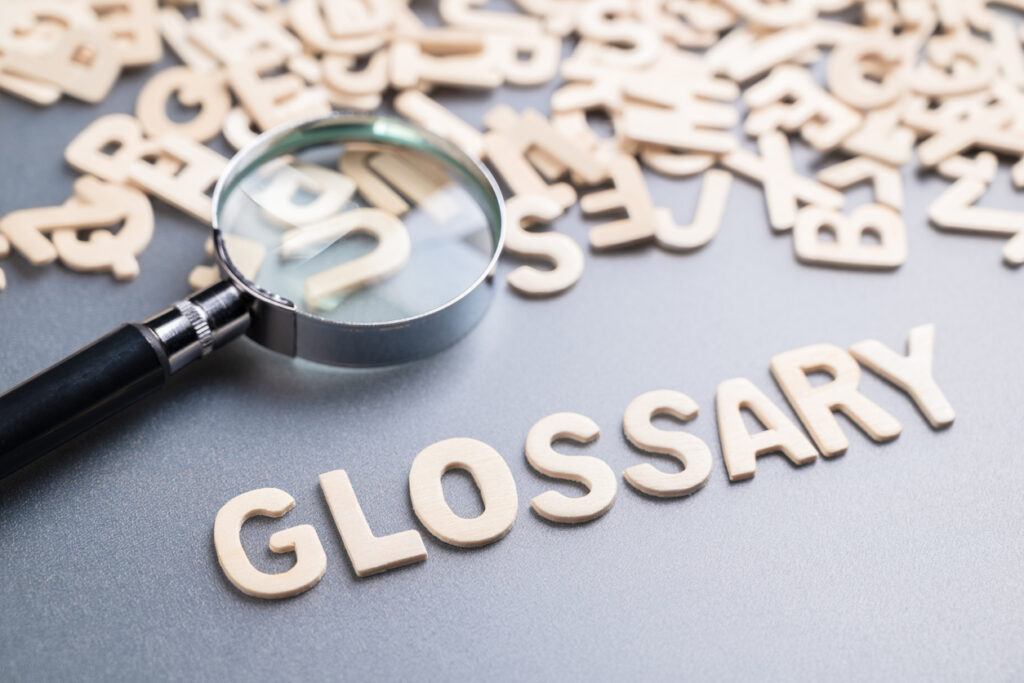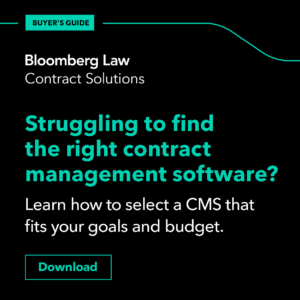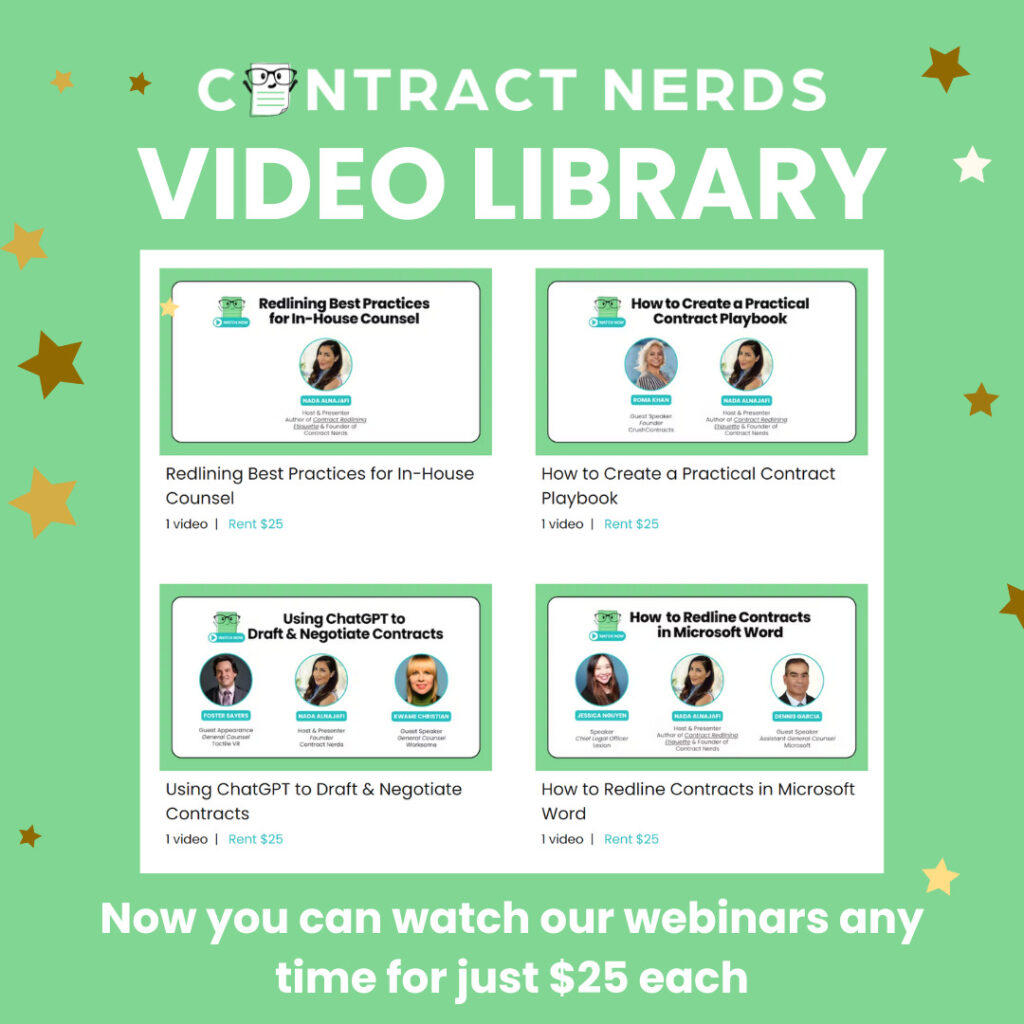KEY TAKEAWAYS:
- AI is not a new technology, but recent advancements mean contract professionals need to understand and differentiate AI concepts.
- AI, machine learning, generative AI, and LLMs are related but distinct concepts, each with its unique applications. ChatGPT and GPT aren’t the same thing either.
- AI is being applied in contract management software to extract information, automate manual tasks, and offer assistance to contract professionals.

You might be over the AI hype, but the technology isn’t going anywhere.
As a contracts professional, your job may depend on your ability to differentiate between AI terms, so let’s define them all.
AI is not new.
We’re seeing a lot of buzz in 2023 because of ChatGPT’s popularity, but the technology is not new. You’ve been using AI for a long time through tools like:
- Spelling and grammar checkers
- Online translators
- Suggested language in Gmail / Outlook
- Ranked Google Search results
- Voice assistants like Siri and Alexa
However, recent advancements mean that you’re hearing about AI 10 times more. Now, we have more data to train these AI models on (think: the size of the internet), more and cheaper computing resources, and smarter algorithms built on deep neural networks.
But what do all the various acronyms and terms related to AI really mean? How can contract professionals decipher various AI products or services to counsel their organizations appropriately? The first step is to understand AI.
This article contains a glossary of commonly used AI terms to help you understand what it all means.
AI, machine learning, generative AI, LLMs — what’s the difference?
AI is not the same as ChatGPT or GenAI, but they do overlap. Here’s how:

AI (artificial intelligence) refers to the capability of computer systems to mimic human cognitive tasks like problem-solving and learning.
Machine learning (ML) is an application of AI that allows machines to learn these capabilities by autonomously extracting knowledge from data and capturing it in a mathematical model.
Models are the machine learning artifacts produced by the process of “training” on data. These artifacts are comprised of the model parameters and algorithm used.
Applications sit on top of models and use them to solve valuable business problems.
Generative AI (GenAI) is a class of ML models that, given a prompt, can generate output such as text, images, code, video, music, etc. ChatGPT is an example of an application using the GPT model to provide a helpful chat-based assistant.
Large Language Models (LLMs) are generally—though not necessarily—within the realm of GenAI models that are trained on huge corpora of data, (such as a large portion of the public internet), and contain billions of parameters.
Guardrails are a concept in capable AI solutions in which the solution has built-in protections to help the user ensure the correctness of AI output and reason about how the AI produced that output.
Feedback Loops and Continuous Improvement are important concepts in a powerful AI tool that ensure that user feedback is automatically included in future invocations of the AI. Solutions that have this capability improve over time instead of just repeating the same mistakes over and over.
GPT is more than just ChatGPT.
GPT is an acronym that expands to Generative Pre-trained Transformer. It references a famous LLM family trained by OpenAI based on the Transformer Architecture (which was invented at Google in 2018). GPT can be used for various tasks, from chatting to summarizing to generating content. But it is not the only LLM out there (Bard by Google, Claude by Anthropic, etc). ChatGPT is only one application of GPT.
ChatGPT refers to a chatbot that was trained on special chat transcript data and built on top of GPT models by OpenAI (one application of LLMs). It’s specifically designed to have a conversational interface, which is why it’s been used by grade school students to gray-haired executives alike.
How AI is used in CLMs.
Contract professionals have been hearing a lot about AI because nearly every CLM seems to be advertising some form of AI in their software. Let’s talk about how AI is being used in contract management software.
Contract AI Repositories are a common part of CLM software where contracts are not only stored but also automatically processed to extract contract metadata, such as information like key dates or clauses like limitation of liability.
Contract AI Analytics is another set of AI features that are commonly found in CLMs that allow legal teams to analyze their contract data at scale, (e.g. finding all contracts that deviate from their standard language). These analytics allow powerful reporting as well as asking questions about contracts in simple natural language.
Generative AI assistants may be built into contract management software to help contract professionals leverage generative AI to automate manual tasks. A few examples include:
- Extracting contract data (deadlines, auto-renewals, etc.)
- Suggesting redlines that match standardized terms and playbooks
- Answering contract questions from sales teams (e.g. Do we have an NDA with X company?)
- Automating common requests and workflows, like NDAs for sales
- Offering summaries of lengthy contracts
AI-powered Process Automation is a very powerful tool that exists in some CLMs. It allows legal teams to encode their repetitive processes like approvals, data retention, and more, such that the CLM would automatically run these processes. This makes legal teams more efficient and also reduces risk since it ensures these processes are always followed.
Learn more about GenAI in contracts and earn a free CLE.
We recently hosted a webinar with both legal and technical perspectives—featuring David Wang, Chief Innovation Officer at Wilson Sonsini, and myself, CTO and Co-founder of Lexion. You can watch the discussion on-demand here—and also get free CLE in all states and Canada.
From email to CLM, harnessing the power of AI is no longer a choice. As a contract professional, you’re at the forefront of ensuring that your organization not only embraces AI but does so intelligently, ethically, and in compliance with legal frameworks.

















